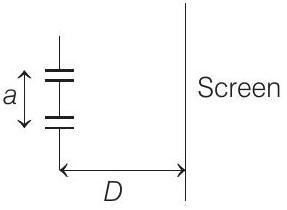Optics 6 Question 3
4. The figure shows a Young’s double slit experimental setup. It is observed that when a thin transparent sheet of thickness
 distance equal to
distance equal to
(a)
(b)
(c)
(d)
Show Answer
Solution:
- Path difference introduced by a slab of thickness
Position of the fringe is
Also, fringe width is given by
According to the question,
Alternate Solution
Path difference,
So, no option is correct.






